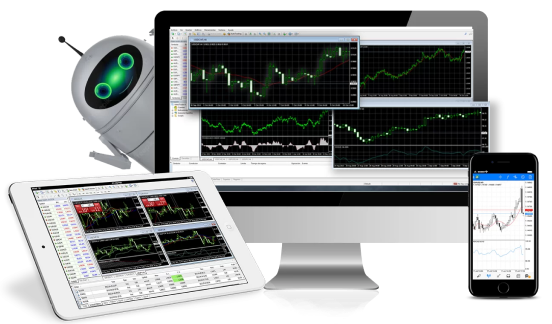Technical analysis
Technical analysis is a trading discipline employed to evaluate investments and identify trading opportunities in price trends and patterns seen on charts. Technical analysts believe past trading activity, and price changes can be valuable indicators of the security’s future price movements.
Technical analysis may be contrasted with fundamental analysis, which focuses on a company’s financials rather than historical price patterns or stock trends.
Although it can be a powerful tool, it is important to remember that technical analysis does have its limitations. Past performance is not always a reliable indicator of future performance, so traders should always use other forms of research when formulating their strategies.
Here are the basics of technical analysis:
What kindof Traders Are You?
The first thing you should consider is what your trading style will be. Are you more likely to open and close your positions in a short period of time, or will you tend to hold on to your assets to see how the market holds out?
Your response to this question will determine the types of trends you will use to carry out your analysis. There are usually three for you to choose from – short-term, intermediate-term, and long-term.
Those who like to conduct their trades at a fast pace can use daily or intraday charts (such as hourly). If you are a trader who likes to take their time, you will be more likely to use weekly or monthly charts.
Support and Resistance
Support and resistance levels are one of the methods that Forex user traders may use in technical analysis to determine their investment strategy. These are metaphorical points on a chart at which investors expect an asset’s current trend to reverse.
Investors will look to a resistance level in upward trends to anticipate when an asset will start to decrease. They will expect the product to ascend in value once a support level has been reached for downward.
.Due to the popularity of the support and resistance levels strategy; they can sometimes turn out to be self-fulfilling predictions. This is because a high volume of investors will place ‘take profit’ orders around these levels in anticipation of a reversal. When this happens, a large scale buying or selling period alone will be enough to send the market in the opposite direction.
Traders will usually plot levels across several different time periods – such as weekly or daily charts. If these anticipated support or resistance points are close together, the asset will be more likely to interact with them.
As with most things in Forex and CFD trading, nothing is certain. Sometimes a trend can manage to break through support or resistance levels and carry on the same trajectory. If this happens, investors will typically look for the next level and expect the asset to react.
If a resistance level is broken, it will then act as a support level if the downward trend starts to reverse. The same is true for a support level, in that it becomes a new resistance level if the prevailing trend begins to move downwards.
Retracements
Upward and downward trends are not continuously moving in the same direction. If you look closely at charts, you will see a number of peaks and troughs throughout the trend line. These minor corrections are called retracements.
Retracements are expressed as ratios, within prevailing values pivoting from 50% – 100% – although there are other levels among them. Traders can use various techniques, such as Fibonacci, to set what to expect retracements and to what extent possible. Additionally, they can use this information to avoid potential losses.
Trend lines
Another method traders use to predict the trajectory of an asset is by plotting trend lines. This is done by drawing two diagonal lines that connect consecutive peaks and troughs.
The price of the selected financial assets may move between these two lines as long as the changes occur. If there is a breach in the used technology, this indicates the end of the current market changes/trends
Investors must pay a particular attention to the trend line that has been tested numerous times, as this indicates that a trajectory will continue for longer. It is also important to note that not all market movements can be identified as trends. Markets must touch a trend line at least three times before they are valid.
Oscillators
These useful tools can inform traders if a particular asset has been overbought or oversold. If this happens, the market price will usually be unable to sustain its current trend, as there will be a lack of available buyers or sellers left to propel the trajectory further. At this point, investors can be more confident that a reversal is imminent.
Bulls and bears
Throughout your trading journey, the two phrases you will likely hear a lot are bulls and bears. These terms are commonly used to describe market fluctuations, or even investors themselves.
A bull market is where an asset is on an upward trajectory, while a bear market signifies a trajectory in the opposite direction. When it comes to traders, a bull is said to be someone who is aggressive and likes to attack the market, while a bear tends to be more defensive and pessimistic.
The actual origin of these terms is unclear, although a popular theory is thought to derive from how each animal attacks its opponents. Bulls tend to thrust their horns up in the air, while bears will swipe downwards.
Currency pair classifications
There are three categories of currency pairs – majors, minors and exotics.
Major pairs always include the USD, no matter if it is the base or counter currency. Examples include USD/JPY, GBP/USD and USD/CHF.
The minor pairs occur when the major currencies are traded against each other, but the USD is not included. Examples of this include GBP/EUR, AUD/CAD and CHF/NZD.
Exotic pairs involve one major currency and one minor currency, such as CHF/TRY and GBP/NOK.



